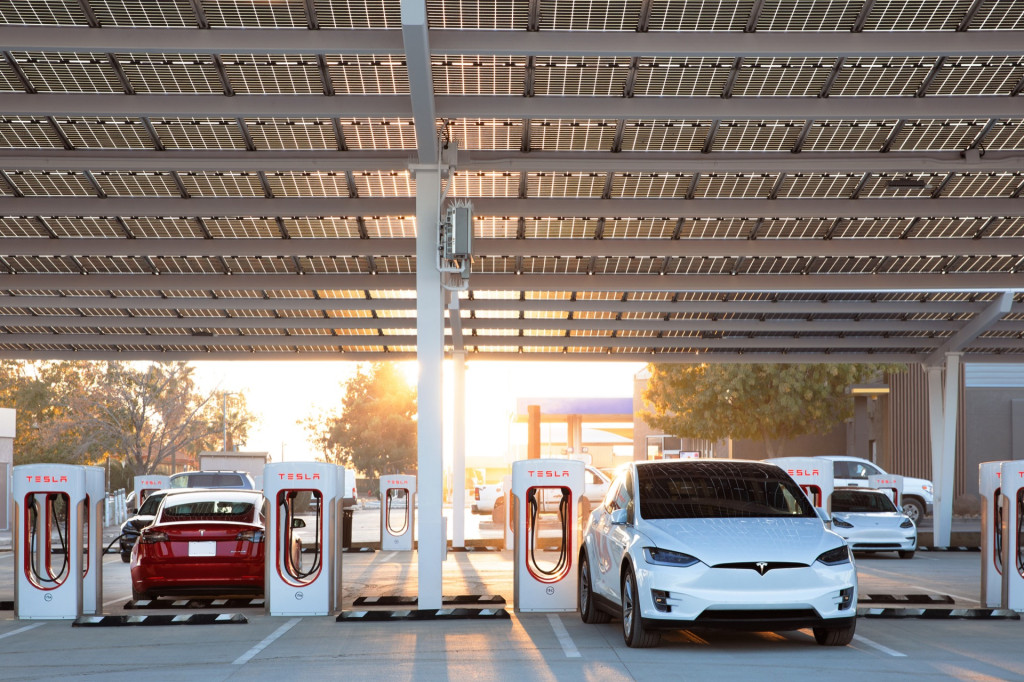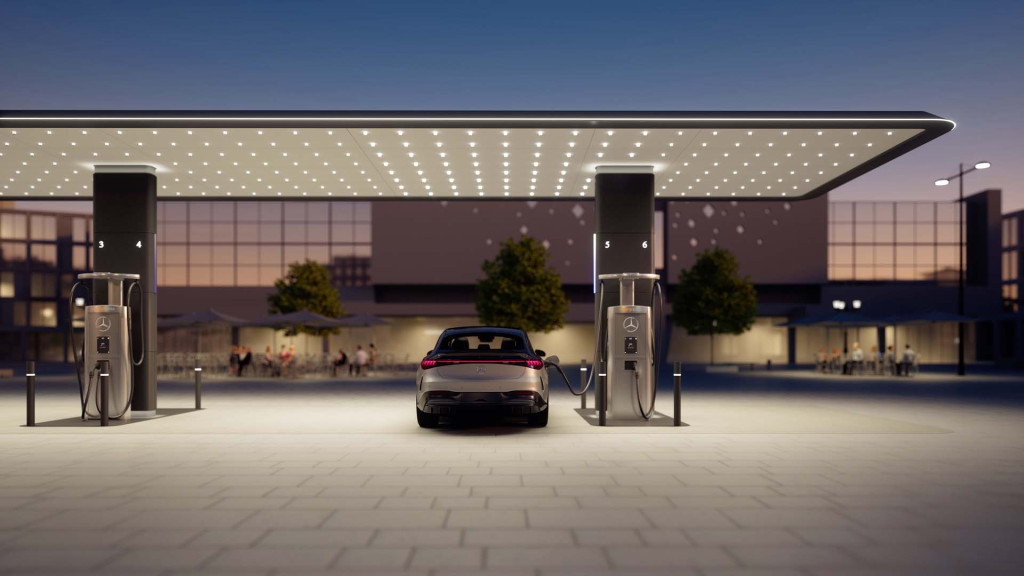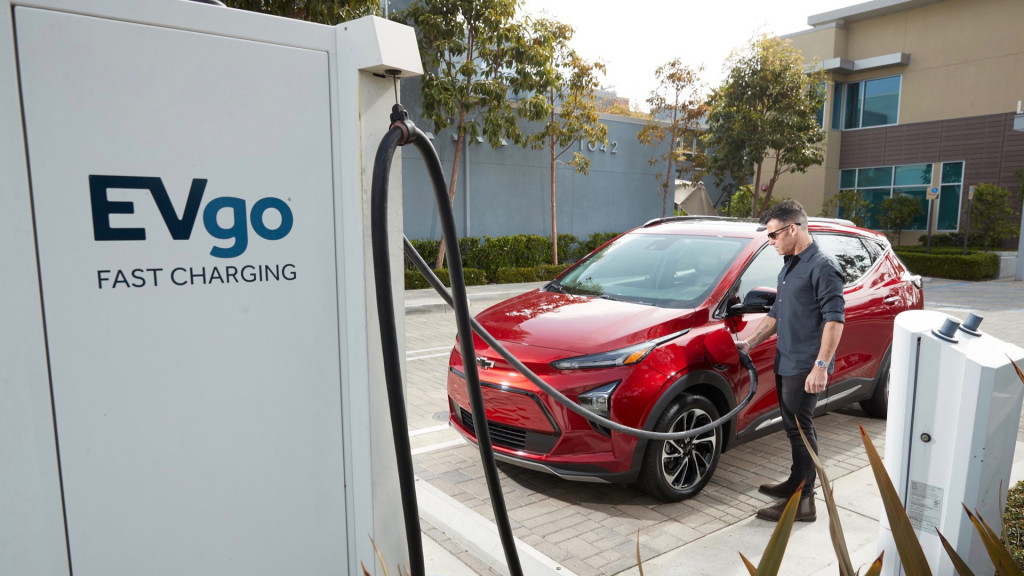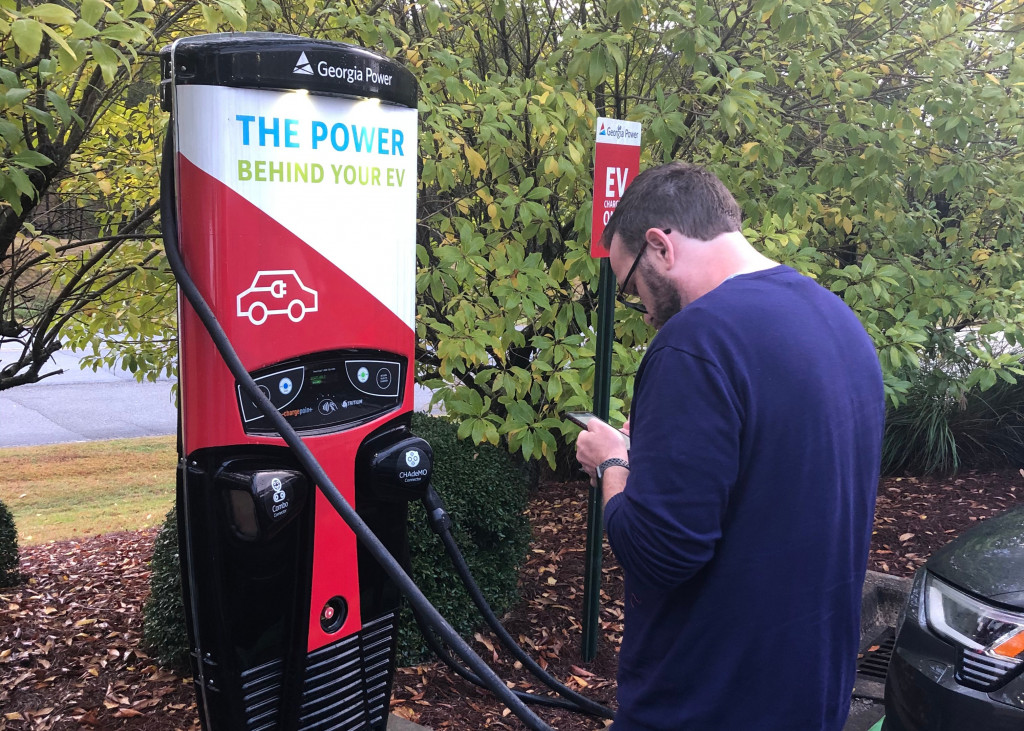There’s a lot riding on the success and effectiveness of the $7.5 billion nationwide network of EV chargers that’s taking form based on the last week's updates from the U.S. Joint Office of Energy and Transportation.
Tesla has its comprehensive Supercharger network for its vehicles, and the Electrify America network has allowed EV road trips along specific routes. But the federal charging buildout will enable much more—by nurturing mainstream EV adoption and serving as a backbone of lasting support for tens of billions of dollars invested in U.S. EV and battery production.

Tesla Supercharger
The Joint Office of Energy and Transportation, created in 2021 with a memorandum of understanding between Secretary of Energy Jennifer Granholm and Secretary of Transportation Pete Buttigieg, is overseeing a number of multi-billion-dollar programs enabled by the Bipartisan Infrastructure Law. And as Deputy Director Rachael Nealer underscored last week in a presentation at Forth’s Roadmap conference in Portland, the agency is deep into the first year of logistically setting up a national EV charging network for convenience, reliability, and equity.
The final rule laying out the framework for the National Electric Vehicle Infrastructure (NEVI) program includes a lot of requirements on the installation, operation, and maintenance of this infrastructure—including interoperability.
By last August 1, all states, the District of Columbia and Puerto Rico each submitted their programs for the $1.5 billion portion of the funds awarded through fiscal year 2022. All have been approved, states have begun to receive funding, and chargers are being installed. A new layer of rules and data reporting requirements will help assure these new chargers keep working.
It all came together remarkably quickly. The state plans looked quite different, both in proposals and in level of detail, yet the federal network has to be “reliable and frictionless,” according to the Joint Office.

2023 Toyota bZ4X at EVgo charging station
Will every EV work with every charger?
To get there, it last week launched the ChargeX Consortium, an effort led by U.S. DOE laboratories such as Argonne National Laboratory, Idaho National Laboratory, and the National Renewable Energy Laboratory to collaborate with a vast group of organizations—automakers, charging networks, hardware makers, public utilities, and tech firms.
Tesla, Rivian, GM, Ford, and Stellantis have already committed to the effort.
Through the ChargeX Consortium, the national labs will develop solutions to test charging hardware and charger software before they’re deployed, the Joint Office says, “to ensure that every electric vehicle works with every charger as the market grows.”
Further, ChargeX will also complement the creation of a centralized data platform for EV charger data reporting that “will facilitate and maximize access to data and insights that could inform future charging reliability analysis.”

Mercedes-Benz EV charging network
Reliability and uptime of EV chargers
Reliability is a core facet of the final rule laying out the charging infrastructure. It includes the requirement that each individual charging port must have an average annual uptime greater than 97%, excluding scheduled maintenance, vandalism, natural disasters, and in some cases, limited hours of operation—although stations along Alternative Fuel Corridors need to be open 24/7.
Multiple fields of data will need to be reported to the federal government, some at the station level, some at the port level. Downtime is calculated to the nearest minute, and for some ports, running at a reduced power level will be considered downtime as the hardware must remain able to deliver to the minimum power level of 150 kw.
As J.D. Power has found, issues with EV charger payment systems are a great source of frustration, although they might not always be properly represented as downtime. And per the Federal Highway Administration, the federal government is also collecting error-code data “to better understand the nature and frequency of charging session problems.”

2022 Chevrolet Bolt EUV at EVgo fast-charging station
Right now the Joint Office is working on the platform and data portal and the mechanics of how this will work. Stations will have options to submit data manually or automatically to the government, with reporting requirements starting this fall and a full data portal for operators arriving next year.
Nealer told Green Car Reports that while it remains uncertain how much of that data will be public-facing, it should also be accessible through the DOE’s Alternative Fueling Station locator on a station-by-station basis.
Making the EV charging experience consistent
As such, there will be more guidance laid out to states for subsequent rounds—potentially suggesting allowances for support and maintenance, which is an allowable expense under the NEVI program.
“In our conversations with the Federal Highway Administration, on the guidance on standards, making sure that you’re getting a similar experience whether you drive up to a NEVI station in Ohio or whether you drive up to one in Colorado is really key,” Nealer said, noting that it doesn’t have to look the same. “There needs to be a bare minimum expectation, so that people can really feel comfortable and get used to the stations.”

DC fast charger, East Ellijay GA
Support windows will also be a potential issue. Many West Coast EV drivers have EV charging hardware horror stories—units that remain up in public places but haven’t been fully functional, reliable, or supported for years.
The Joint Office is also looking for some private partnerships so that when the program timeline ends the stations are still being operated and maintained—even if each state and station might have a slightly different way of doing that.
“We want to make sure these stations aren’t a stranded asset after five years, so it is actually very important to have a longer-term perspective on this,” Nealer said.













